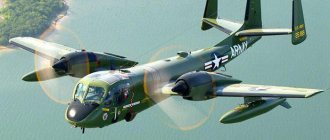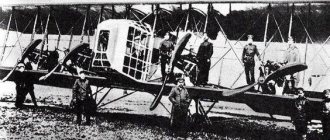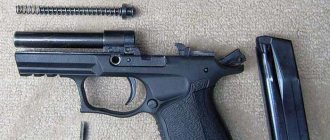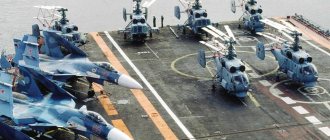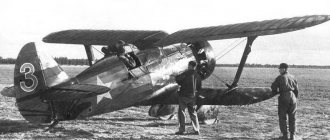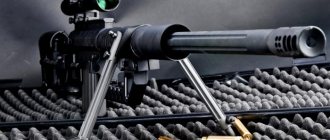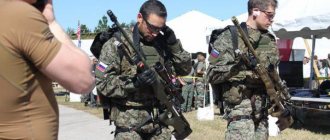The history of the emergence of a new type of military
It is generally accepted that the history of Russian army aviation begins with the creation of the first helicopter squadron in Serpukhov in 1948. However, it would be a mistake to ignore the combat path traveled by Russian and Soviet military aviation during previous wars.
It is known that back in 1909, several foreign-made aircraft appeared in service with the tsarist army. They received their baptism of fire during the First World War. At the same time, the first private enterprises were created in Russia that produced aircraft and aircraft engines. By 1917 there were already about twenty of them.
Despite the fact that combat vehicles were used mainly for reconnaissance and bombing, much of the experience of those years formed the basis for the subsequent creation of army aviation. Basically, the need for its appearance became obvious during the battles of the Great Patriotic War.
Mi-26: Tsar Helicopter
The Mi-26, developed more than 40 years ago, still remains the world's largest serial transport helicopter. The vehicle can carry 82 paratroopers, 60 stretchers with wounded or 20 tons of cargo. In addition, the Mi-26 is capable of carrying oversized cargo on an external sling, for example, transporting another helicopter of the same type. The maximum speed of the Mi-26 is 295 km/h, the flight range when fully loaded is 475 km. The vehicle received its baptism of fire in 1984 in Afghanistan.
To date, more than three hundred units of the Mi-26 have been produced in various modifications. The helicopter is widely used in army aviation. The role of the helicopter is not limited to transport tasks. On the basis of the Mi-26, vehicles for radio warfare, fuel tankers, control posts, anti-submarine, fire-fighting and medical variants are being created. The newest modification of the Mi-26T2V is characterized by increased safety, has modern equipment and the ability to autopilot in difficult conditions.
Challenges facing Army Aviation
Modern army aviation serves to solve the widest range of operational and tactical tasks. During combat operations, it strikes, hitting enemy personnel, as well as tanks, anti-tank weapons and armored vehicles. In addition, it is used to provide fire support for ground troops and conduct reconnaissance.
Thanks to the role that army aviation plays during combat operations, combined arms units, units and formations have the opportunity to significantly increase their operational mobility. It is of particular importance for ensuring communications and controlling the actions of ground troops, as well as during mining, evacuation, search and rescue of the wounded.
Army aviation brigades are also used in the fight against a certain category of enemy air forces. Practice shows that their use is especially effective when performing tasks related to the destruction of low-flying aircraft and helicopters. They are also indispensable for suppressing air defense systems.
Purpose of attack combat helicopters
Russian Army Aviation is based on units equipped with helicopters of various types and modifications. According to their purpose, they are divided into three categories: military transport, transport combat and combat. Let's take a closer look at each of them.
Combat, or, as they are also called, attack helicopters, are equipped with various types of weapons and perform a wide range of operational tasks. They are responsible, in particular, for combating armored vehicles, as well as enemy tanks and defeating small ground targets. During operations, they carry out air strikes on military units, accompany military transport helicopters, and if an air enemy appears, they fight it.
An important area of application for combat helicopters is aerial reconnaissance and surveillance, in which data on the location of targets is transmitted to ground firepower, as well as to bombers or attack aircraft.
Mi-24 and Mi-35M: multi-purpose relatives
The Mi-24 multi-purpose military transport helicopter became the first domestic helicopter specifically designed for combat operations. The design turned out to be so successful that it is now one of the most popular vehicles on the world market, the high efficiency of which has been repeatedly proven in combat conditions. The helicopter is equipped with modern high-precision weapons and is capable of performing combat missions around the clock in various weather conditions.
The Mi-35M transport and combat helicopter is a deep modification of the Mi-24 and is designed to destroy armored vehicles and provide fire support to ground forces units. It is equipped with modern high-precision weapons and is capable of performing combat missions around the clock in various weather conditions. One of the most important features of the Mi-35M is the ability to transport personnel with weapons, transport up to three wounded from the battlefield, as well as cargo inside the cabin or on an external sling.
Helicopters of the Mi-24/35 type are among the most combative in the world; the history of their combat use includes more than 30 wars and military conflicts. The Mi-35M has successfully demonstrated its effective performance in combat operations in Syria.
Transport and combat vehicle units
The next category of helicopters included in the Russian army aviation is transport and combat vehicles. They are designed to provide ground forces with everything necessary, deliver and disembark troops, as well as conduct various types of rescue operations and evacuate the wounded. In addition, their task may include laying minefields and destroying ground targets.
By country[edit]
Argentine Army Cessna T-41D Mescalero AE-054, 2009
- Argentine Army Aviation (Argentine Army)
- Army Flying Corps (United Kingdom) (British Army)
- Army Aviation Corps (India) (Indian Army)
- Australian Army Aviation (Australian Army)
- Bangladesh Army Aviation Group (Bangladesh Army)
- Brazilian Army Aviation Command (Brazilian Army)
- Colombian National Army Aviation (Colombian Army)
- French Army Light Aviation (French Army)
- German Army Aviation Corps (German Army)
- Hellenic Army Aviation (Greek Army)
- Indonesian Army Aviation (Indonesian Army)
- Islamic Republic of Iran Army Aviation (Islamic Republic of Iran Army)
- Malaysian Army Aviation (Malaysian Army)
- Nepal Army Air Service (Nepal Army)
- Pakistan Army Air Corps (Pakistan Army)
- Light Aviation Unit of the Portuguese Army (Portuguese Army)
- Spanish Army Airmobile Force (Spanish Army)
- Aviation Center of the Royal Thai Army (Royal Thai Army)
- United States Army Aviation Branch (US Army)
Modernization of army aviation in the post-Soviet period
As follows from data published by military observers, most of the helicopter fleet of the Russian Air Force was created even before the collapse of the USSR and was inherited by today’s army. This includes the Mi-24 attack helicopters, which have proven themselves in local military conflicts, the Mi-26 heavy transport vehicles and a number of other aircraft that are superior to their foreign counterparts in a number of technical characteristics.
The beginning of large-scale modernization of military equipment, in which the Russian army aviation was also involved, began in 2000. In addition to the fact that during this period a large number of new modifications of vehicles that were previously in service appeared, several fundamentally new models were put into production. Among them, a special place was occupied by the Ka-52 multi-purpose attack helicopters, as well as the MI-28N. Currently, they are among the combat vehicles that form the basis of the power of Russian army aviation.
High combat readiness of flight units
The combat effectiveness of this type of troops, which manifested itself during the difficult years of the Afghan conflict, did not decrease in the nineties, despite all the economic difficulties. The Russian Air Force helicopter crews performed their duty with honor during operations carried out in Chechnya, as well as in a number of other “hot spots”. Everywhere they demonstrated an example of high professionalism and readiness to complete any combat mission assigned to them.
In the early 2000s, there was a trend towards a widespread reduction in tension, which caused local conflicts, often escalating into military clashes. This made it possible to make efforts to re-equip the flight units and improve the skills of their personnel. Large-scale military exercises began to be held regularly throughout the country, in which army aviation also took part. Photos of such training flights are given in the article.
The operation in Syria that became a combat test
A real test of combat training was the participation of Russian pilots in a large-scale anti-terrorist operation launched in Syria. Despite the fact that the actions are not carried out against the regular army, but against disparate gangs, they involve extreme risk and require high levels of training and coordination from all participants.
Particular complexity is created by the qualitatively increased level of enemy air defense systems and the difficult climatic conditions in which it is necessary to solve the assigned tasks. It was these factors that caused losses among the personnel of Russian units.
Army aviation of foreign countries
Helicopters were used in a similar way in the armed forces of other large states of the world. For example, in the United States a special Army Aviation Corps has been created, which, in addition to conventional vehicles, also has unmanned aerial vehicles. Its purpose is to conduct joint combat operations with infantry, armored and airborne formations.
According to official data published in 2007, the American Army Aviation helicopter fleet consisted of about 4,200 combat vehicles. At present, this information is certainly outdated, but it also gives an idea of the importance attached to this branch of the military overseas. The same can be said about the armed forces of Germany and England, where, along with multi-purpose helicopters, transport aircraft of various types are used.
Far
The purpose of strategic aviation (long-range) is to destroy enemy targets, including aircraft, directly in the rear of combat operations. In addition, long-range aviation performs reconnaissance and other special missions. The main representative of the aircraft fleet is the Tu-160.
The first bomber was the famous “Ilya Muromets”, created in 1914, during the reign of Tsarist Russia, at the same time the first special squadron of heavy bombers was created. And during the Second World War, one interesting story happened related to the Soviet long-range bomber Pe-2. Then, in 1942, he successfully transported the People's Commissar for Foreign Affairs Molotov in both directions, who managed to achieve allied “handshakes” with the USA and Great Britain.
Comrade Molotov recalled that when he was on the plane, dressed in the same way as the rest of the crew - in high boots, fur overalls and a helmet, he no longer felt like the second man of the USSR after General Secretary Stalin. German intelligence, by the way, learned about this incident only a few days later, when it was no longer possible to interfere with the negotiations. Thus, the Pe-2 was nicknamed the “diplomatic bomber”.
